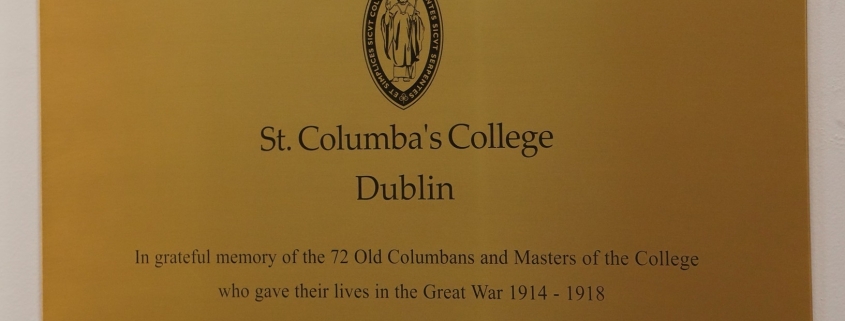Trip to Ypres, April 2022
Remembrance in Ireland is not easy, at least not when it comes to the First World War, where, it is estimated, up to 50,000 Irish soldiers may have lost their lives. For a century it has been fraught with complexity and I, as an Englishman, cannot claim to fully understand the situation in Ireland in the early twentieth century. The ‘War to End all Wars’ (what a sad phrase that is right now) ended in 1918, but the War of Independence finished in 1922 and it complicated the act of remembering, since those who died in Flanders Fields had been fighting for the British Empire, of which Ireland was no longer a part. So for thousands of families, rather than proudly telling the stories of the husbands and sons who died, rather than seeing their names inscribed on monuments and commemorated in annual acts of remembrance, it was considered politic to keep the pain to themselves and bury it. Many of those Irish heroes never got the thanks that they deserved or that their families craved.
100 years is a long time and times have changed. No longer is it considered unacceptable to recall a great-grandfather who died at the Somme, or a great-uncle who sank in the mud at Passchendaele. To remember them is not a political statement, or a denial of the sacrifice of good men who died in the fight to gain freedom from my country’s rule. It is allowed now to simply remember the pain and the suffering and the grief felt by so many families who said goodbye to their loved ones and never saw them again.
There is a chapel in Ypres called St. George’s Memorial Chapel. On the walls of this chapel a large number of brass plaques have been placed by the most famous schools in Great Britain and Northern Ireland. However, there is no plaque anywhere there that remembers those from schools now in the Republic who made the ultimate sacrifice. When I first went there three years ago, I determined to put that right.
This Wednesday a group of Old Columbans and staff are making a short pilgrimage to Ypres. We will lay a wreath in the daily ceremony at the Menin Gate and make a tour of some of the sites that are significant to the Irish experience of the war. Then, on the Friday morning, we are going to hold a simple service in St. George’s Chapel to dedicate the plaque that we have commissioned in memory of the 72 former pupils and staff who died in the war. That number does not compare to the many hundreds from some of England’s greatest public schools who died, but in the years 1890-1914 St. Columba’s was a very small school and 72 dead represents an extraordinary proportion of the community. We will read out all their names and try, vainly, to do justice to the pain of their families.
It just feels appropriate that these young Irish men, who died in that awful conflict, should be remembered alongside so many others, who were their compatriots at the time.
Mark Boobbyer, Warden.
April 2022




